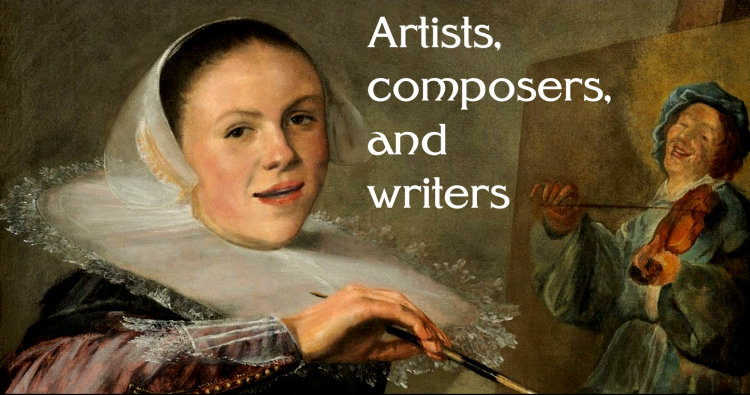10. What is American about American Art?
The assertion of national identity in the arts typically involves a negotiation between myth and reality.
Myth need not preclude facts: General Washington taking his troops across the River Delaware on Christmas
night 1776 is a fact; Emanuel Leutze’s 1851 painting, Washington Crossing the Delaware, is a building
block in the national myth. As a country of immigrants, the young America lacked a common mythology of her own,
and attempts to coopt one from the original inhabitants were only partially successful. So she has relied to a
great extent on mythologizing her history, the unique features of her land, and a set of quasi-religious
beliefs linking that land to her destiny.
But by the late 1900s, an opposite tendency was emerging: Realism. It can be seen in the poetry of Walt
Whitman, in the painting of the Ashcan School, and the Regionalist writers and artists of the interwar years.
It is an esthetic that rejects foreign standards and is determined to show America just as she is, smokestacks,
slums, and all. It is not the only approach—throughout the century, it would coexist with abstraction—but it is
one that I see as distinctly American. rb.
The script, videos, and images will be posted immediately after class.
Here are brief bios of the artists and poets considered in the class, listed in chronological order of birth.
You can access all biographies via the BIOS link on the syllabus page.
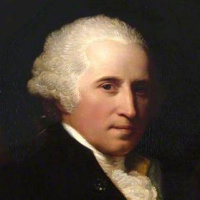 |
Benjamin West, 1738–1820. American painter working mainly in England.
Although he set up as a portraitist, it was as the painter of historical and mythological subjects that he made his name. A founding member of the Royal Academy in 1768, he became its president in 1792. His London studio became a Mecca for American artists studying abroad.
|
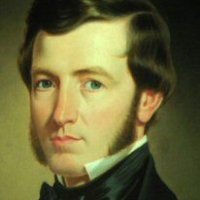 |
William Billings, 1746–1800. American composer.
Originally a tanner by trade, he became one of the first American-born composers, essentially self-taught, writing hymns, somewhat more complex "fuguing tunes," and patriotic songs.
|
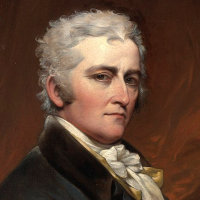 |
John Trumbull, 1756–1843. American painter.
Trumbull fought in the American War of Independence, and founded his career on depictions of battles and other key historical events. He spent several years in London working with Benjamin West, and was even imprisoned there for several months for his part in the Revolution.
|
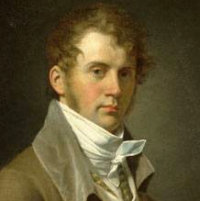 |
John Vanderlyn, 1775–1852. American painter.
After painting a portrait of Aaron Burr, the statesman virtually adopted him, sending him for five years to Paris to study, and giving him an apartment in his own home. Vanderlyn's career is chiefly noted for his portraits of other political figures, though he did some narrative paintings as well.
|
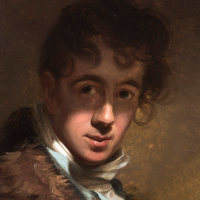 |
Thomas Sully, 1783–1872. American painter.
Sully was born in England and returned there several times (on one occasion to paint Queen Victoria), but his main career was as the leading portrait painter in Philadelphia in the early 1900s.
|
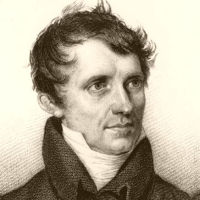 |
James Fenimore Cooper, 1789–1851. American novelist.
Cooper grew up in Cooperstown NY, a community founded by his father. After being expelled from Yale, he served first as a merchant seaman and then in the US Navy. The reputation of his large literary output, once much admired both at home and abroad, now rests mainly on his five Leatherstocking Tales, especially The Last of the Mohicans (1826).
|
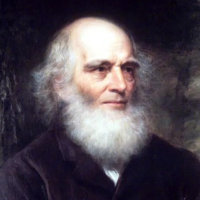 |
William Cullen Bryant, 1794–1878. American poet.
Born in a log cabin in Massachussetts, Bryant rose to become editor of the New York Evening Post and one of the most popular poets of his time. His style, though by no means innovative, was easy to understand, drawing many readers to his themes of the divine in nature and the continuity of life. He was a close friend of Thomas Cole.
|
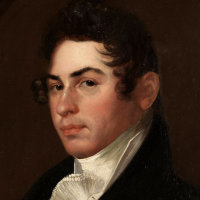 |
John Neagle, 1796–1865. American painter.
A pupil of Thomas Sully, Neagle became the most fashionable portrait painter in Philadelphia. The realism of his Pat Lyon at the Forge is therefore not typical of him, but was done at the request of the sitter.
|
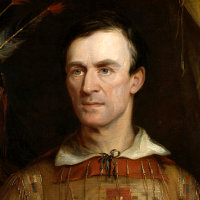 |
George Catlin, 1796–1872. American painter.
Catlin practiced law in Philadelphia before taking up painting; he was entirely self-taught. He is best known for his numerous depictions of Native Americans, and would spend large parts of each year staying in their camps as an honored guest.
|
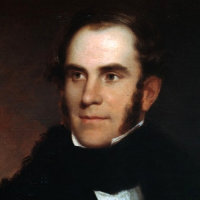 |
Thomas Cole, 1801–48. American painter, born in England.
A founder of the Hudson River School. Towards the end of his career, he turned to grand historical and allegorical themes, of which The Course of Empire was one.
|
 |
Ralph Waldo Emerson, 1803–82. American philosopher.
The leader of the Transcendentalist movement, Emerson made his mark through speeches, essays, and poetry. He began as an ordained Unitarian pastor, but left the church to develop his belief of the immanence of God in Nature and Mankind.
|
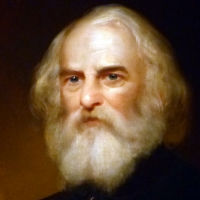 |
Henry Wadsworth Longfellow, 1807–82. American poet.
Longfellow was born in Maine, and taught at Bowdoin College and later at Harvard. His American themes and stirring diction made him the most popular poet of his day and earned him a reputation abroad. His Song of Hiawatha (1855) and similar poems employed the form of the Finnish Kalevala to create a similar Native American myth.
|
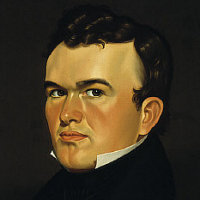 |
George Caleb Bingham, 1811–79. American painter.
More or less self-taught, Bingham is noted for the simplicity and freshness he brought to his depictions of boatmen on the Missouri, where he lived.
|
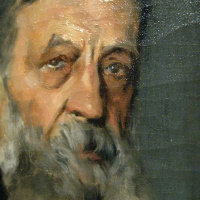 |
William Henry Fry, 1813–64. American composer.
"Fry was the first known person born in the United States to write for a large symphony orchestra, and the first to compose a publicly performed opera.[1] He was also the first music critic for a major American newspaper, and he was the first known person to insist that his fellow countrymen support American-made music." [Wikipedia]
|
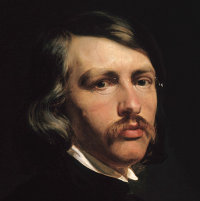 |
Emanuel Leutze, 1816–68. German-American painter.
Leutze was born in Germany, came to America with his family at age 9, and began his career here. But he returned to Düsseldorf from 1841 to 1859, and it was there that he painted his iconic Washington Crossing the Delaware, modeled in part by other American painters who had come over to study with him.
|
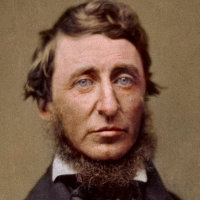 |
Henry David Thoreau, 1817–62. American philosopher and poet.
With Emerson, Thoreau (accent on the first syllable) was a leading figure in the Transcendentalist movement. He is best known for his two-year stay in a cabin he built himself in Emerson's woods at Walden Pond, but he was active politically also, as an abolitionist, pacifist, early environmentalist, and coiner of the term "civil disobedence."
|
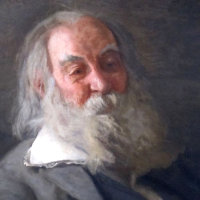 |
Walt Whitman, 1819–92. American poet.
Writing in a free verse style that would influence successors in the next century, Whitman combined a Transcendantalist philosophy with an acute observation; his later works were criticized for their overt sexuality. He worked as an army clerk and volunteer nurse in the Civil War.
|
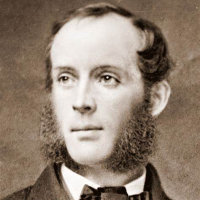 |
Frederic Edwin Church, 1826–1900. American painter.
A pupil of Thomas Cole, Church was (with Bierstadt) the outstanding landscapist of the second generation of the Hudson River School. He was attracted to highly dramatic subjects, such as his Niagara, which made him famous, and traveled to the Andes and Middle East in search of them.
|
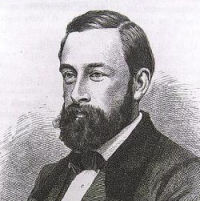 |
Albert Bierstadt, 1830–1902. American landscape painter.
Born in Germany, but living mainly in New York. Although a member of the Hudson River School, he became the painter par excellence of the American expansion to the Rockies and beyond.
|
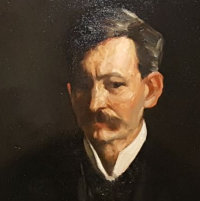 |
Robert Henri, 1865–1929. American painter.
Clearly a charismatic leader and teacher, Henri's contribution to American art may rest more in the roster of artists he influenced—in the Ashcan School but also beyond—than in his own work. A realist at heart, he did much to combat American conservatism around the turn of the century.
|
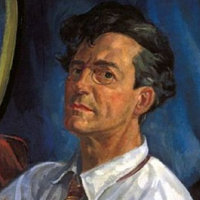 |
John Sloan, 1871–1951. American painter.
Sloan was one of a number of realist painters in New York in the early 20th century popularly known as "The Ashcan School" because of their fondness for less elevated subjects. Sloan himself was a committed Socialist.
|
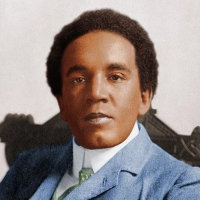 |
Samuel Coleridge-Taylor, 1875–1912. English composer.
Son of a physician from Sierra Leone and an English mother, he studied at the Royal College of Music with Stanford. His compositions had some modest international success, but none to match the acclaim given to his three cantatas based on Longfellow's Hiawatha.
|
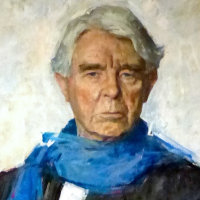 |
Carl Sandburg, 1878–1967. American poet and biographer.
Sandburg won two Pulitzer Prizes for his poetry and one for his biography of Abraham Lincoln. He began his writing career as a journalist on the Chicago Daily News, and many of his poems paint a realistic, but basically optimistic, portrait of city life.
|
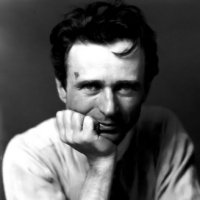 |
Edward Steichen, 1879–1973. American photographer.
Born in Luxembourg, but brought to the USA as an infant, Steichen became one of the leading photographers of his time, credited with converting the medium as an art form; he later became director of photography at MoMA.
|
 |
George Bellows, 1882–1925. American painter.
A leading member of the Ashcan School, and known for his scenes of city life and boxing, Bellows was a pupil and close associate of Robert Henri. At 27, he was the youngest artist ever to be elected to the National Academy of Design.
|
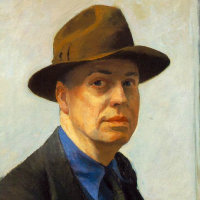 |
Edward Hopper, 1882–1967. American painter.
In all his career, Hopper maintained a balance between the social realism of his teacher Robert Henri, and the simplified forms of the abstraction that came into play soon after. Painting almost exclusively scenes from contemporary life, he managed to universalize the specific, and give everyday situations a powerful aura that transcended their literal subject.
|
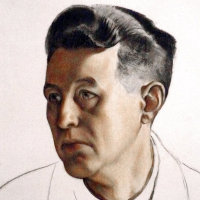 |
Charles Sheeler, 1883–1965. American painter and photographer.
A leading artist of the Cubo-Realist school in the interwar period, Sheeler photographed factories, grain silos, and similar artifacts, and rendered them in canvases that share clear colors and a clean geometry.
|
 |
Edgard Varèse, 1883–1965. French-American composer.
After training in Turin and Paris, he established himself as a conductor in Berlin. Coming to the US in 1915, he made his mark as an advocate of new music, and as a composer constantly seeking new sounds, including ultimately tape and electronics.
|
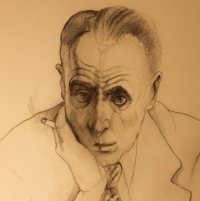 |
Sinclair Lewis, 1885–1951. American novelist.
Lewis became the first American to win the Nobel Prize in Literature, citing him for his ability to create "new types of characters." Those types were ordinary middle- and working-class people from middle America, portrayed with a sometimes satirical disdain for cant in works such as Main Street (1920), Babbitt (1922), and Elmer Gantry (1927).
|
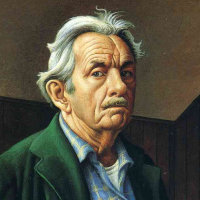 |
Thomas Hart Benton, 1889–1975. American painter and muralist.
After training in Paris and painting in a more avant-garde style, he turned to subjects from history and myth, treating American figures in an exaggeratedly classical style. He later simplified again, to become one of the leading Regionalist painters of country life.
|
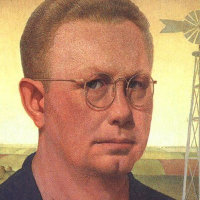 |
Grant Wood, 1892–1942. American painter.
Working mainly in his native Iowa, Wood became one of the leading Regionalist painters of the interwar years. He is noted for his objective stance, clear colors, and precise attention to detail, qualities he brought even to his depictions of people, as in his iconic American Gothic of 1930.
|
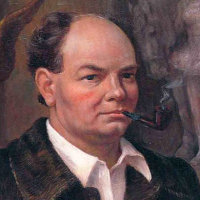 |
John Steuart Curry, 1897–1946. American painter and muralist.
One of the leading figures of the Midwestern Regionalist movement in the interwar period, Curry painted scenes from his home state of Kansas, and patriotic pictures for the government in WW2.
|
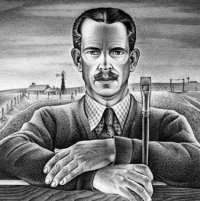 |
Alexandre Hogue, 1898–1994. American painter.
A realist painter with distinct Symbolist or Surreal overtones, Hogue's best-known work relates to the Southwest, epecially during the Dust Bowl.
|
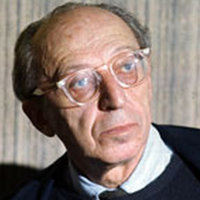 |
Aaron Copland, 1900–1990. American composer.
Trained in Paris, Copland began writing in the style of the European avant garde, but with ballet commissions in the 1930's and 1940's such as Billy the Kid, Rodeo, and Appalachian Spring, he developed the open folk-inflected style that has become, for many people, the sound of American music.
|
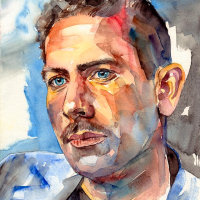 |
John Steinbeck, 1902–68. American novelist.
Winner of both the Pulitzer and Nobel Prizes, Steinbeck's novels span the gamut from the comic Tortilla Flat (1935) to the epic East of Eden (1952), and include the iconic tragedy of the dispossessed, The Grapes of Wrath (1939).
|













































